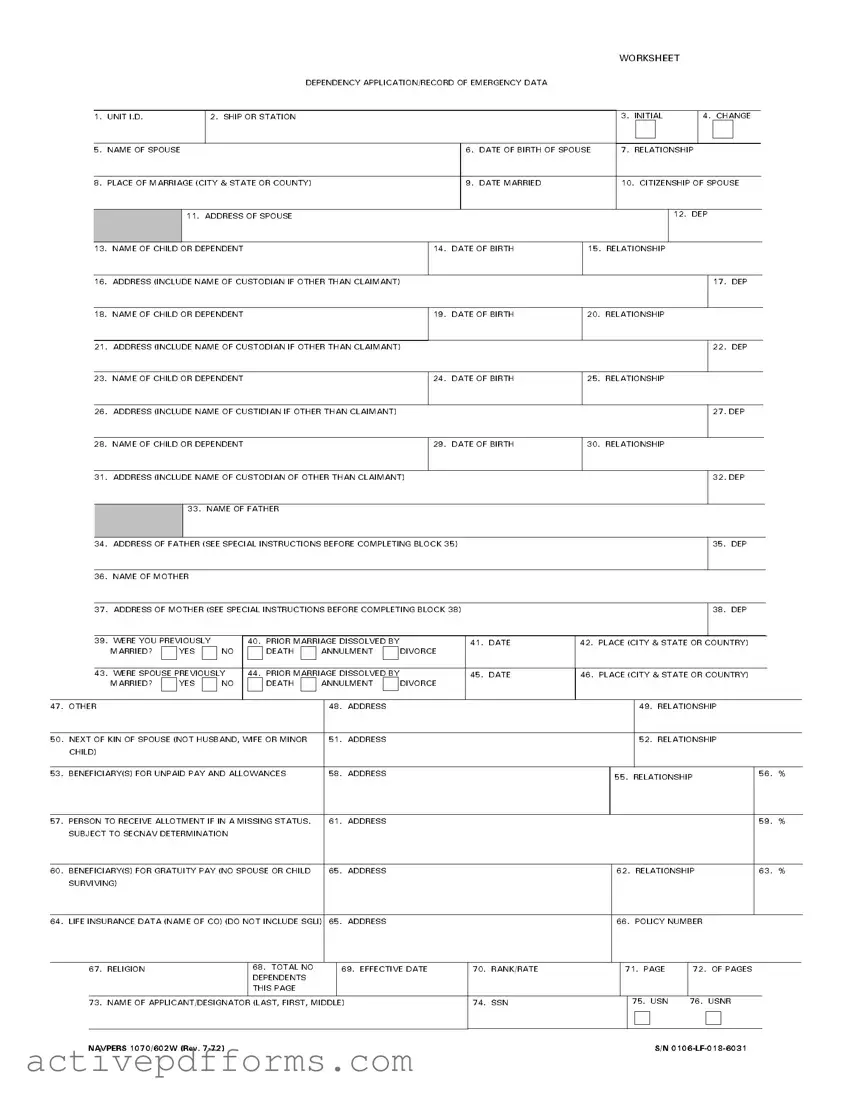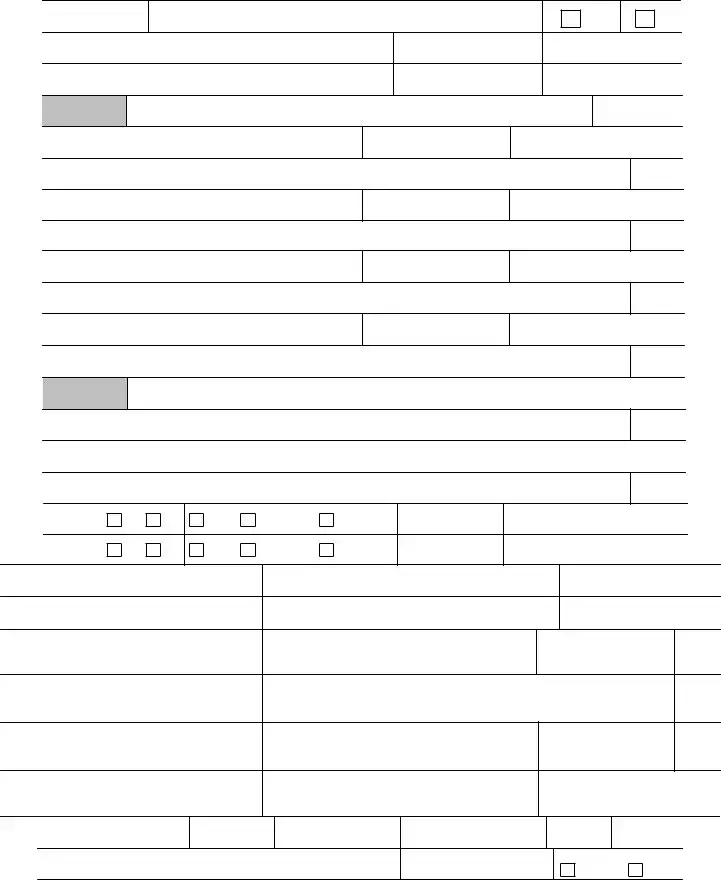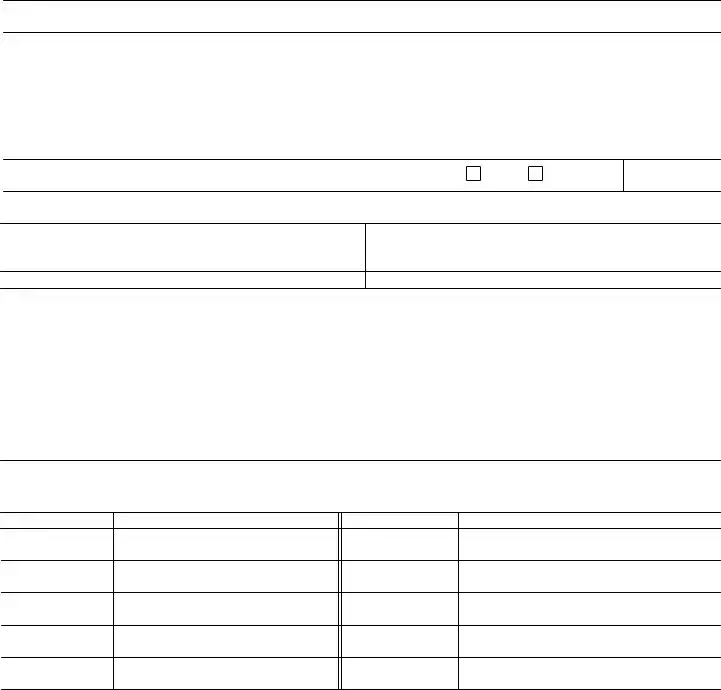The NAVPERS 1070 602W form, officially titled "Worksheet Dependency Application/Record of Emergency Data," is a comprehensive document designed for use within the Navy. This form serves a dual purpose: it acts as an application for those seeking to establish or update dependency records and also functions as a vital record of emergency data for service members. Details such as unit identification, ship or station assignments, and initial or change status are required at the outset, ensuring accurate placement and record-keeping. Critical personal information, including details about the service member's spouse, children, or other dependents, such as dates of birth, citizenship, relationships, and addresses, are meticulously noted to provide a clear picture of the dependent landscape of the individual in service. Furthermore, the form delves into prior marital statuses, citizenship details, and even addresses life insurance data outside of the Servicemembers' Group Life Insurance (SGLI), underscoring the depth of information gathered to safeguard the interests of service members and their families. Not solely confined to personal and dependent information, the document also inquires about the service member's next of kin and designates beneficiaries for unpaid pay, allowances, and gratuity pay in dire circumstances, delineating clear financial directives. Moreover, this form asks for the location of wills or other crucial documents, emphasizing the importance of preparedness and the well-being of those connected to naval personnel. The NAVPERS 1070 602W underscores a vital aspect of military administration, meticulously aligning personal, familial, and financial details to ensure comprehensive support and preparedness for active duty members and their loved ones.


